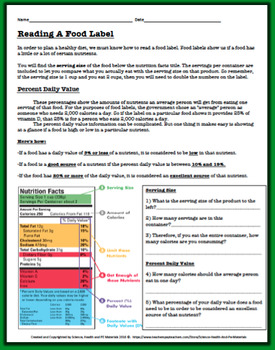42 how to understand food labels australia
How to read food labels | New Idea Magazine Here are some tips on how to read food and nutritional labels: Nutritional panel Considered the most valuable part of the label, this panel shows the average amount of energy - measured in kilojoules - protein, fat, saturated fat, total carbohydrates, sugars and sodium in a product. Food label reading guide | Nutrition Australia Food and drink labels will include information about the product, where and when it was made and a statement of ingredients, as well as any warnings or allergen statements. Most food or drink packages have a Nutrition Information Panel (NIP) which tells you the quantity of various nutrients a product contains per serve and per 100g or 100 ml.
How to read food labels | healthdirect In Australia, the law requires all manufactured foods to carry labels containing safety and nutrition information. This information helps you to make decisions about the food you buy and eat so you can follow a healthy diet. The label will tell you: the name of the product, describing accurately what it is the brand name

How to understand food labels australia
Labelling - Food Standards The Food Standards Code includes the general labelling and information requirements (Chapter 1 of the Code) that are relevant to all foods, and sets out which requirements apply in different situations (for example food for retail sale, food for catering purposes, or an intra-company transfer). Understanding food labels - Musculoskeletal Australia (MSK) In Australia, all manufactured food must provide nutrition and safety information on their labels. This includes: the name of the product and an accurate description of what it is the brand's name an ingredients list (in order from largest to smallest by weight) nutritional information (e.g. energy, fat, protein, sugars and salt) Your easy guide to reading and understanding food labels The Health Star Rating is calculated using: Energy (kilojoules). Nutrients to limit - saturated fat, sodium (salt) and sugars. Positive nutrients - dietary fibre, protein and fruit, vegetable, nut and legume content. Because Health Star Ratings are designed to judge similar food products, comparing different kinds of foods will not give ...
How to understand food labels australia. Reading food labels - Food Allergy Education How to read food labels that meet the new PEAL law Under the new PEAL law, common food allergens are to be listed with the plain English name alongside the actual ingredient name. This is shown in the label example below. In the statement of ingredients, declarations must: Be in bold font. Have bold font contrasting distinctly with other text. Food labels - Better Health Channel The best way to tell whether food is safe to eat is to: • Check the use-by or best-before date when food shopping. • Keep an eye on the use-by or best-before dates on the food in your cupboards, refrigerator and freezer. • Never eat any food that is past its use-by date, even if it looks and smells okay. List of ingredients on food labels Reading food labels & nutrition panel - Diabetes Queensland higher fibre. Every food label tells a story and the Nutrition Information Panel simply gives you the facts. Ingredients list records all food ingredients and additives in order from greatest to smallest amount by weight. Importantly, the ingredient list must declare if the product contains common allergens such as milk, eggs, nuts and gluten. How to Read Food Labels & Understand Nutrition Info Panel | Better ... Australian food labels generally have two columns: One shows the nutritional value of a single serve and the other shows the nutritional value per 100g/ml. It's important to know the difference and have your glasses on when you read the label. Why? Because it's easy to get confused. Take rice crackers and yoghurt as an example…
Food labels: a guide to reading nutrition labels - MyDr.com.au Solid foods labelled as 'low-fat' must not contain more than 3 grams of fat per 100 gram; 'low-fat' liquid foods must not contain more than 1.5 grams of fat per 100 mL. Only foods that are low fat can use a fat-free claim. Labels can therefore only claim that a food is 97%, 98% or 99% fat free. 'Low cholesterol'. Labelling poster - how to read food labels This interactive resource explains the food labelling requirements set out in the Food Standards Code and what that information means. Click on the numbers to find out more about food labelling. A useful poster is also available. You can download a copy here (PDF 372KB), or for a printed A2 version please email information@foodstandards.gov.au. What you Need to Know About Food Labelling | Whole Kids Nutrition Information Panel. The Nutrition Information Panel on a food label offers the simplest and easiest way to choose foods with less saturated fat, salt (sodium), added sugars and kilojoules, and more fibre. A good resource can be found on the Australian Government's Eat for Health website here. Understanding food labels fact sheet - NDSS Food labels will typically include a nutrition information panel, list of ingredients, the 'use by' or 'best before' date and identify potential food allergens and additives. Food labels also tell you the amount of carbohydrates (carbs) you eat and drink. This can help you manage your blood glucose levels.
Understanding food labels: How to read Australian nutritional panels Under FSANZ rules, these labels must reveal how much of the following is in the product: Energy (in kilojoules or both kilojoules and calories) Protein Fat Saturated fat Carbohydrates Sugars Sodium (salt) These contents must show average amount per 100g (or 100ml for liquids) and per serving. A breakdown of what's on nutrition labels Understanding Food Labelling in Australia | PediaSure Ingredients must be listed in descending order by weight, so the ingredient that the food contains the most of is at the start of the list. If a food has lots of fat, salt or sugar in it, you'll see it in the first few ingredients. How to read a food label - Healthy Kids Choosing foods in the supermarket can be difficult, so here's a handy guide to help you make decisions. How to Read Food Nutrition Labels | nib Energy. Let's start at the top of the label with 'energy'. Usually measured in kilojoules, it's the total amount of energy you'll consume from the food or drink. Energy is a combination of fats, protein and carbohydrates and the more energy you ingest, the more you should aim to burn off (for example, with exercise).
Food labels: How to read and decipher the fine print - ABC News 3. General identifying information. Labels must show the name of the food, the business address and the batch or lot identification of the food. The regulator is specific here. This yoghurt would ...
Australia's getting new country of origin food labels - here's what they look like | Business ...
PDF Reading food labels - Queensland Health Reading food labels . Understanding how to read food labels can help you make healthy food choices. Food Standards Australia and New Zealand (FSANZ) regulates food labelling in Australia. Most packaged food and drink must have a nutrition information panel. Exceptions include those in very small packages, some baked products and take-away food ...
How to understand food labels - Eat For Health The Nutrition Information Panel on a food label offers the simplest and easiest way to choose foods with less saturated fat, salt (sodium), added sugars and kilojoules, and more fibre. It can also be used to decide how large one serve of a food group choice or discretionary food would be and whether it's worth the kilojoules.
How to read food labels in Australia: Find nasties and real nutritional ... My advice for reading food labels is to look at the 'per 100g' values, as 'per serve' can often be misleading if you're likely to eat more than the suggested serving size. The 'per 100g' column is also the most useful for comparing products to assess their sugar, protein, sodium and fat content.
PDF how to understand food labels - Eat For Health Instead learn a few simple label reading tips to choose healthy foods and drinks, for yourself. You can also use the label to help you lose weight by limiting foods that are high in energy per serve. 100g Column and Serving Size If comparing nutrients in similar food products use the per 100g column.
How to read a label | NSW Food Authority The ingredients list and Nutrition Information Panel tell us about allergens, additives, fats and the quantity of basic nutrients. What's on a food label Learn about the different sections of a food label. Country of origin The country or countries where a food was grown, manufactured or packaged must appear on the label. Directions for use
Reading food labels to avoid food allergies and intolerances In Australia, many allergens must be declared on food labels regardless of the amount present. This includes ingredients that may be classed as processing aids e.g. flour used to coat moulds. Allergens that must be declared by law are milk, egg, soy, wheat, fish, seafood, tree nut and peanut. A variety of terms can be used to identify ...
Food labels: understanding what's in my food | Sanitarium Health Food ... Our handy guide to reading food labels will make it easier for you to make healthy choices for you and your family. There are four main tools used on food products in Australia: Nutrition Information Panel (compulsory) Ingredients list (compulsory) Daily Intake Guide (voluntary) Health Star Rating (voluntary) But what do they all mean? 1.
What's on a food label | NSW Food Authority A food label must contain accurate weights and measures information for the quantity of food. The Australian Government National Measurement Institute regulates this area. Nutrition information The nutrition information panel (NIP) lists key nutrients so consumers can keep track of what they're eating and serving sizes, and decide between products.
Your easy guide to reading and understanding food labels The Health Star Rating is calculated using: Energy (kilojoules). Nutrients to limit - saturated fat, sodium (salt) and sugars. Positive nutrients - dietary fibre, protein and fruit, vegetable, nut and legume content. Because Health Star Ratings are designed to judge similar food products, comparing different kinds of foods will not give ...
Understanding food labels - Musculoskeletal Australia (MSK) In Australia, all manufactured food must provide nutrition and safety information on their labels. This includes: the name of the product and an accurate description of what it is the brand's name an ingredients list (in order from largest to smallest by weight) nutritional information (e.g. energy, fat, protein, sugars and salt)
Labelling - Food Standards The Food Standards Code includes the general labelling and information requirements (Chapter 1 of the Code) that are relevant to all foods, and sets out which requirements apply in different situations (for example food for retail sale, food for catering purposes, or an intra-company transfer).








Post a Comment for "42 how to understand food labels australia"